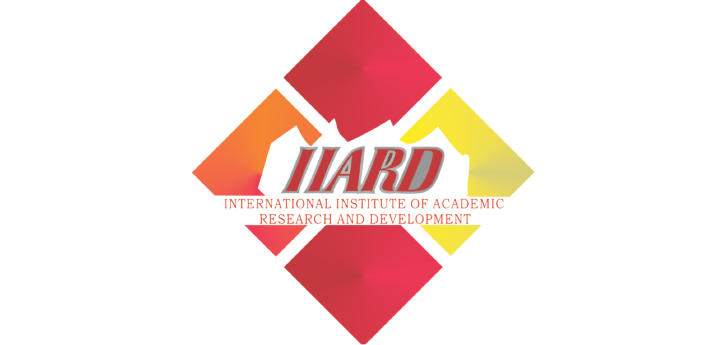From Silos to Synergy: A Unified Framework for Engineering - Environmental Leadership in ISO 14001 Implementation
Itohan Comfort Egbedion
Abstract
Industrial organizations often face fragmented Environmental Management Systems (EMS) due to siloed operations between engineering and environmental management functions, compromising regulatory compliance, stakeholder confidence, and environmental performance. This study introduces the Integrated Environmental Excellence Framework (IEEF), a novel approach that systematically integrates engineering management principles with ISO 14001 requirements to create cohesive, high-performing EMS in industrial settings. Developed through a qualitative synthesis of engineering theory, ISO 14001 literature, and industry best practices, the IEEF repositions EMS from a reactive compliance mechanism to a proactive driver of sustainability and operational resilience. The framework improves transparency, stakeholder engagement, and cross-functional coordination, offering a pathway toward integrated environmental leadership. Organizations that implement the IEEF may experience improved cross-functional efficiency, reduced regulatory risk, and measurable sustainability outcomes.
Keywords
References
Retrieved June 12, 2025, from https://asq.org/quality-resources/iso-14001
Borri, F. and Boccaletti, G. (1995), "From total quality management to total quality
environmental management", The TQM Magazine, Vol. 7 No. 5, pp. 38-42.
https://doi.org/10.1108/09544789510098614
ISO/TC 207/SC 1. (n.d.). Plan?Do?Check?Act model. International Organization for
Standardization Technical Committee 207, Subcommittee 1. Retrieved June 15, 2025,
from
https://committee.iso.org/sites/tc207sc1/home/projects/published/iso-14001---
environmental-manage/plan-do-check-act-model.html
Jamieson, M. V., Lefsrud, L. M., Sattari, F., & Donald, J. R. (2021). Sustainable leadership and
management of complex engineering systems: A team-based structured case study
approach.
Education
for
Chemical
Engineers,
35,
37–46.
https://doi.org/10.1016/j.ece.2020.11.008
Jasch, C. (2006). Environmental management accounting (EMA) as the next step in the
evolution of management accounting. Journal of Cleaner Production, 14(14), 1190–
https://doi.org/10.1016/j.jclepro.2005.08.006
Jones, S. A., Michelfelder, D., & Nair, I. (2017). Engineering managers and sustainable
systems: The need for and challenges of using an ethical framework for transformative
leadership.
Journal
of
Cleaner
Production,
140(Part
1),
205–212.
https://doi.org/10.1016/j.jclepro.2015.02.009
Stovpnyk, O.?V. (2024). Building integrated management systems: Achieving synergy and
sustainability in modern organizations. ?????? ?????????????????? ?????????????
????????????
?????
??????????
????,
(4(284)),
89–95.
https://doi.org/10.33216/1998-7927-2024-284-4-89-95
Waxin, MF., Knuteson, S.L. & Bartholomew, A. Drivers and challenges for implementing ISO
14001 environmental management systems in an emerging Gulf Arab country.
Environmental Management 63, 495–506 (2019). https://doi.org/10.1007/s00267-017-
0958-5
Yang, M. G., Hong, P., & Modi, S. B. (2011). Impact of lean manufacturing and environmental
management on business performance: An empirical study of manufacturing firms.
International
Journal
of
Production
Economics,
129(2),
251–261.
https://doi.org/10.1016/j.ijpe.2010.10.017
Zeng, S. X., Xie, X. M., Tam, C. M., & Shen, L. Y. (2011). An empirical examination of benefits
from implementing integrated management systems (IMS). Total Quality Management
&
Business
Excellence,
22(2),
173–186.
https://doi.org/10.1080/14783363.2010.530797
IIARD International Journal of Geography & Environmental Management
Vol. 11 No. 6 2025 E-ISSN 2504-8821 P-ISSN 2695-1878 www.iiardjournals.org online version
IIARD – International Institute of Academic Research and Development
Page 171
Glossary of Terms
• Adaptive Feedback: Continuous feedback mechanisms between environmental and
engineering teams that ensure dynamic system evolution through policy revisions, audit
insights, and stakeholder input.
• Collaboration Pillar: The IEEF component that promotes stakeholder involvement
across all levels in EMS design and review, ensuring technical systems reflect
comprehensive environmental expectations.
• Cross-Functional Integration: The systematic coordination of activities, decisions, and
resources across different organizational departments to achieve unified objectives.
• eKPIs (Engineering-Environmental Key Performance Indicators): Specialized metrics
that measure the effectiveness of integrating engineering management principles with
environmental management practices, including ratios of proactive versus reactive
environmental actions and percentage of engineering decisions incorporating
environmental input.
• EMS (Environmental Management System): A structured framework that organizations
use to manage their environmental responsibilities and improve environmental
performance systematically.
• Engineering Management: The systematic application of principles rooted in systems
thinking, quality assurance, and project planning to manage or optimize technical
processes.
• Environmental Management: The management of organizational activities that have or
can have an impact on the environment.
• IEEF (Integrated Environmental Excellence Framework): A novel five-pillar
framework that systematically integrates engineering management principles with ISO
14001 requirements to create cohesive, high-performing environmental management
systems.
• ISO 14001: The international standard that specifies requirements for an effective
environmental management system, providing a framework for organizations to
improve their environmental performance.
• Organizational Silos: Isolated departmental structures that operate independently with
limited communication or coordination, often leading to inefficiencies and fragmented
outcomes.
• PDCA (Plan-Do-Check-Act): A continuous improvement methodology used in ISO
14001 that guides organizations through systematic planning, implementation,
monitoring, and enhancement of environmental management practices.
• Performance Monitoring Pillar: The IEEF component that establishes, monitors, and
communicates engineering-environmental KPIs through real-time dashboards and
comprehensive reporting systems.
IIARD International Journal of Geography & Environmental Management
Vol. 11 No. 6 2025 E-ISSN 2504-8821 P-ISSN 2695-1878 www.iiardjournals.org online version
IIARD – International Institute of Academic Research and Development
Page 172
• Stakeholder Engagement: The systematic process of involving individuals, groups, or
organizations that can affect or are affected by organizational activities in decision-
making and implementation processes.
• Strategic Alignment Pillar: The IEEF component that integrates engineering procedures
with environmental regulations and corporate sustainability policies, ensuring
environmental considerations are embedded in all technical decisions.
• Systems Integration Pillar: The IEEF component that leverages engineering
management tools like process mapping, root cause analysis, and project management
software to systematically execute and implement environmental management systems.
• Systems Thinking: A holistic approach to analysis that focuses on the way that a
system's constituent parts interrelate and how systems work overtime and within the
context of larger systems.

